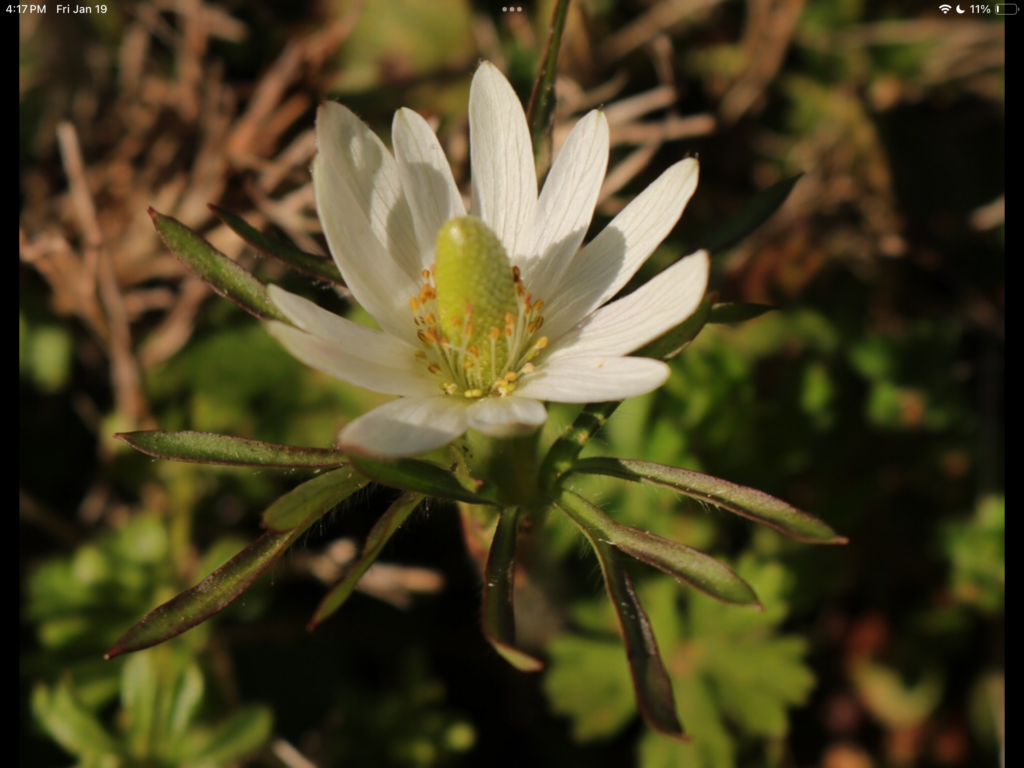
Tenpetal Anemone
Ponder this. Human beings have celebrated the Vernal Equinox (daytime and nighttime are the about the same lengths) as the first day of Spring for Thousands of years. When does a plant in North Central Texas celebrate the first day of Spring?
IT STARTS WITH THE WINTER SOLSTICE
Humans have known about and celebrated the Winter solstice for thousands of years. Five thousand years ago, Stonehenge was built to align with the Winter and Summer Solstices.
The Winter Solstice (December 21 or 22 in our neck of the woods) is the shortest day and, conversely, the longest night of the year. This means daylight hours will gradually grow longer (and nights become shorter) through the spring and early summer until the Summer Solstice (June 21) – the longest day of the year. So, what’s all this got to do with plants, trees, grasses, and gardeners
THEN THERE IS PHOTO-PERIODISM
Photo-Periodism is the response of an organism the length of light or dark. This is really a big deal. Over millions of years, the Photo-Periodism Effect (slight changes in daytime-nighttime length) has become nature’s way of signaling the coming season. Scientists think this is because, unlike variable environmental factors (e.g. rainfall, temperature, etc.), the Daytime/Nighttime Lengths Cycle never changes. Photo-Periodism delivers cues to millions of living organisms signaling it’s time to begin seasonal transition.
When it comes to plants, a recent study describes Photo-Periodism as “… one of the most significant and complex aspects of the interaction between plants and their environment.”
Changing Daytime/Nighttime length (as signaled by the Winter Solstice) spurs a Photo-Periodism induced transition to Spring. Inside the plant’s biology, these processes drive things like blossom development, leaf growth, and root-spread. As gardeners, we anxiously await those beautiful blooms.
How reliable is Photo-Periodism? One multiyear study found Photo-Periodism was a better predictor of blossom development than either snowmelt (temperature proxy) and date. In this study, pollinator was highly correlated with the effects of Photo-Periodism.
Nothing hard is ever easy, and nothing complicated is ever simple. Photo-Periodism is complex, and only partially understood. Some plants are short-day sensitive, while others are long-day sensitive. Some plants are unaffected by Photo-Periodism. To paraphrase many of the research papers, “Much more study is needed.”
EARLY SPRING FLOWERS
Now is the time in Texas to keep an eye out for those early Spring flowers (sometimes called “ephemerals”). Often, they are low to the ground (probably for the warmth) with small (or even tiny) blossoms. Taller, leggier wildflowers will appear as the Texas heat rises in the summer.
Where I live (North Central Texas) this time of year brings henbit (the “weed” we love to hate), little anemones, the ever-present dandelion, and an occasional wild trillium. Pear and wild plum trees begin to bloom. Pollen packets begin appearing on Wingback Elm trees. And of course, there is always bees aplenty buzzing about.
THE FUTURE OF PHOTO-PERIODISM
It seems nothing can escape the long arm of humankind. Photo-Periodism is no exception. Wide spread light pollution from artificial lighting has been shown to have negative effects on certain plants. Some herbicide treatments seem to interfere with some plants’ Photo-Periodism processing. And as always, the BIG, SCARY unknown is Climate Change. Here’s why.
Plants, animals, and marine life – must “anticipate and prepare” for seasonal transitions. Failure to make this transition can be fatal. Life forms have come to rely on Photo-Periodism to adapt to rigors of the coming season. If Climate Change alters timings of this cycle, things may not go well.
The 2023 Winter Solstice has come and gone. The transition to Spring has begun even though the chill is still with us, and there are probably frosty days ahead. But when we see those first flowers of Spring, we know Photo-Periodism is alive and well, and it’s time for gardeners to get busy.